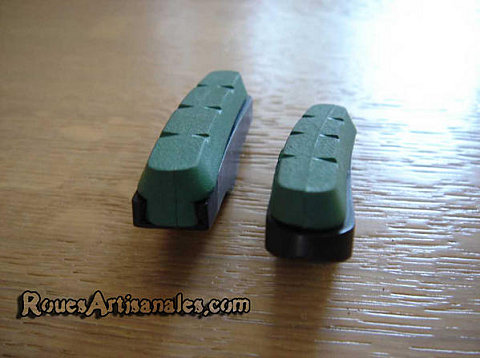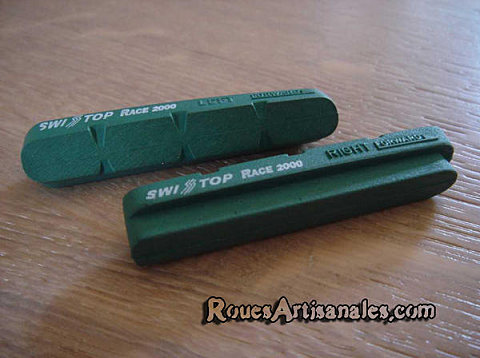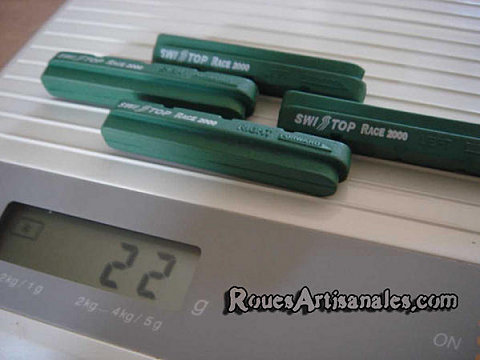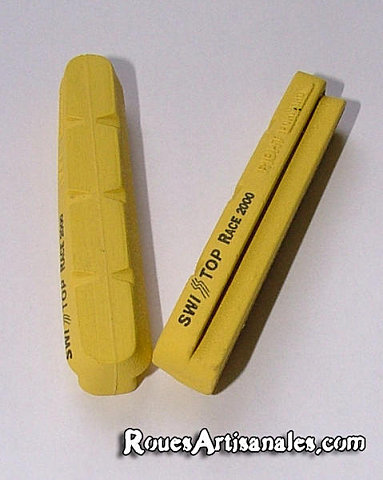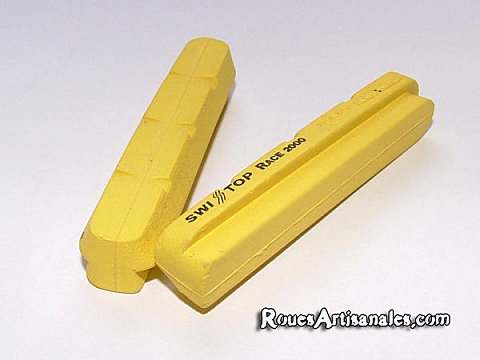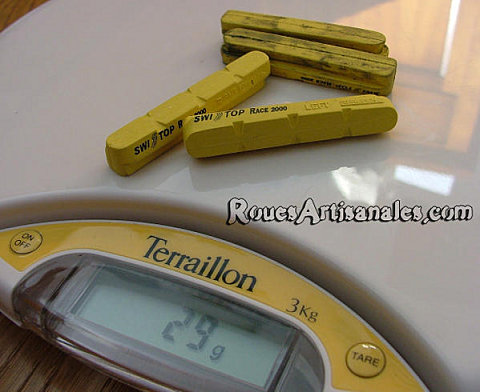We could test during this year several brands and kind of brake pads. The using condition were multiples and we then could take conclusions for every pads. Here is the first part of the brake pad presentation. In the following articles we will show each rubber particularities, their pros and cons.
 |
But first of all, quick presentation of the Swissstop brake pads. Swissstop brand is a product of REX company founded 60 years ago and specialised in chemical products, particularly elastomer based glues and rubber compounds. Today the company makes and sells these technical products as well as thermoplastic and elastics materials with differents properties. Taking place at Mendrisio in the south part of the switzerland, close to the italian border, the brand Swissstop proposes bike brakes rubbers adapted to any using conditions we can meet while biking. Thus, Race 2000 Campagnolo pads are the couzin of the Flash model, themselves specifics to Shimano pads holders. Each of them is available as many compounds to suit any rim and any use.
Here are the two most efficient pads from Swissstop road range: |

|
For aluminium alloy or ceramic rims, the GHP (Green High Performance) compound is advised and guarantee an incomparable braking power under any condition according to Swissstop: |
|
Click to enlarge
|
Click to enlarge
|
|
Click to enlarge
|
|
In the hand, this GHP pad is quite stiff, it doesn’t bend easily. At first sight, there is few material and it seems they will get worn quickly. It’s misleading, don’t worry 😉
The rubber is somewhat smooth and therefore doesn’t seem abrasive.

|
For carbon fibers rims, the yellow mixture called Yellow King is more adapted and the compound can heat up to 300°C according to the manufacturer! |
|
Click to enlarge
|
Click to enlarge
|
|
Click to enlarge
|
|
This brake pad is much flexier than the GHP. After close inspection, it’s rough and granulous.

